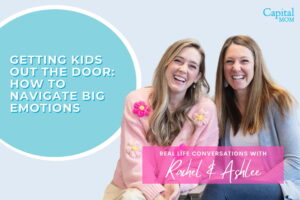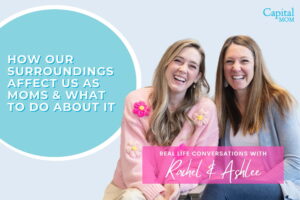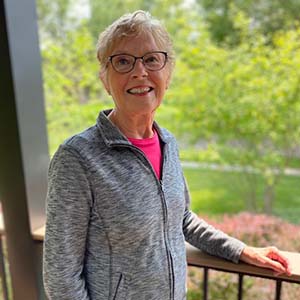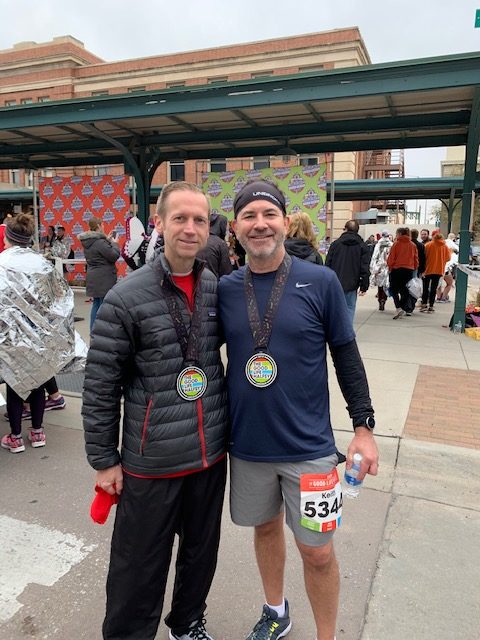As an infectious disease pharmacist and member of Bryan’s Sepsis Committee, I have seen many cases of infections and sepsis in many different patients. I specialize in getting the right antibiotics to patients with severe infections like sepsis, and work mostly with adult patients.
Now that I’m a father and we are expecting again very soon, I started looking deeper into the risk of sepsis for pregnant women and newborns. And, I was surprised at what I found.
Infections are a Serious Risk for Pregnant Women and Newborns
Thanks to improved prenatal care, most pregnancies and deliveries happen without complications. However, infections are still a serious risk for pregnant women, new moms and newborns. In fact, recent data shows an increase in sepsis-related deaths for pregnant women in the United States.
Newborn sepsis remains a leading cause of death among infants. There are two times sepsis can occur in infants:
- Before a baby is 72 hours old, called early-onset sepsis. This is usually the result of viruses or microorganisms passed from the mom to the baby in-utero or during delivery. The incidence of this type of sepsis has decreased considerably since the 1990s due to new health screenings for pregnant women
- After a baby is 72 hours old, called late-onset sepsis. This is usually the result of viruses or microorganisms acquired in the environment or through invasive procedures
What Exactly is Sepsis?
Sepsis is a potentially life-threatening condition caused by the body’s response to an infection. Basically, it’s when your body “over-reacts” to an infection. This can cause your organs (i.e. heart, kidney, liver, lungs, etc.) to fail, and can lead to death. Sepsis can be thought of as the sickest a person can get from an infection. Lots of people get infections, but not everyone develops sepsis. Some people are at a higher risk of developing sepsis than others.
What Can Increase Your Risk of Pregnancy-Related Sepsis?
Many of the risks are associated with the individual person and the type of pregnancy, such as:
- Have never delivered a baby before (called nulliparity)
- Currently pregnant with or recently delivered twins, triplets, etc. (called multiple gestations)
- African American race
Others are associated with the type of delivery or medical therapies, such as:
- Cesarean-section delivery (i.e., C-section)
- Assisted reproductive technologies (i.e., artificial insemination, in-vitro fertilization, etc.)
What Can Increase the Risk of Sepsis in Newborns?
Some are associated with mom:
- A common bacteria called Group B Streptococcus (GBS), most of the time this is not harmful but it can cause a severe infection in some newborns
- Inflammation of membranes surrounding the baby due to bacterial infection (this is called chorioamnionitis)
- Currently pregnant with or recently delivered twins, triplets, etc. (called multiple gestations)
Some are associated with the birth:
- Prelabor rupture of membranes (occurs when the amniotic sac breaks before labor begins)
- Prolonged rupture of membranes (over 18 hours)
- Preterm birth (defined as a birth before 37 weeks)
- Low birth weight
Some are associated with procedures after birth:
- Invasive procedures such as a cervical stitch
- Prolonged use of antibiotics
- Prolonged use of a catheter inside the baby’s body
- Ventilator associated pneumonia
What are the Warning Signs of Sepsis?
The signs and symptoms are different for moms and babies. It’s important to know the warning signs and seek care immediately. The sooner you or your loved one receives care, the better the chance for a full recovery.
Sepsis symptoms in pregnant women or new moms:
- Shivering, fevers, shakes or very cold
- Extreme pain or discomfort (feel the “worst you have ever felt”)
- Pale or discolored, or clammy/sweaty skin
- Sleepy, difficulty waking up, confused
- “I feel like I might die”
- Shortness of breath
- Decreased urination
Sepsis symptoms in newborns:
- “Just not looking right”
- Unusually sleepy, lethargic or difficult to wake up
- Unusually irritable, inconsolable
- Not feeding or eating normally, vomiting
- Less than three wet diapers or stools in a day
- Fever or hypothermia (low temperature)
- Shivering, shaking or poor muscle tone
- Respiratory distress (not breathing right)
- Abdominal distention or bloating
- Bulging fontanel (soft spot on a baby’s head)
- Unexplained jaundice (yellow skin)
- Blood in stools
Take Action
If you see a combination of the above symptoms and suspect sepsis, or just feel like something isn’t right, call your doctor or go to the emergency room IMMEDIATELY. It’s important to say “I’m concerned about sepsis”. The sooner treatment is started, the better chance you or your loved one has of surviving and making a full recovery.
When caught early, immediate administration of IV antibiotics and fluids can be all you need to make a full recovery. The longer someone delays getting treatment for sepsis, the greater the likelihood that the person will have severe complications such as kidney failure requiring dialysis or problems taking care of themselves (such as walking by yourself, bathing, brushing your teeth, etc.). It can even lead to death.
Be Informed, Tell Others – Let’s Raise Awareness and Save Lives
As an infectious disease pharmacist, treating sepsis and letting others know how to recognize the signs and symptoms of sepsis is my job. As a new father and husband, it’s my passion.
Sepsis is always a serious condition. The sooner signs and symptoms are recognized and treatment is sought, the better chance to save a life. Every patient is somebody’s loved one, and now that I’ve got two little ones depending on me, I feel even more responsibility to make sure people understand how serious and common sepsis actually is.
Prevention of pregnancy-related and newborn sepsis starts with good prenatal care, good hygiene and frequent handwashing. Bacteria and viruses are naturally found on surfaces and easily spread by unwashed hands.
I urge you to tell everyone you know about the signs and symptoms of sepsis as well as the ways to prevent it. With your help, we can increase awareness of sepsis so people will seek treatment sooner, and lives will be saved.
































